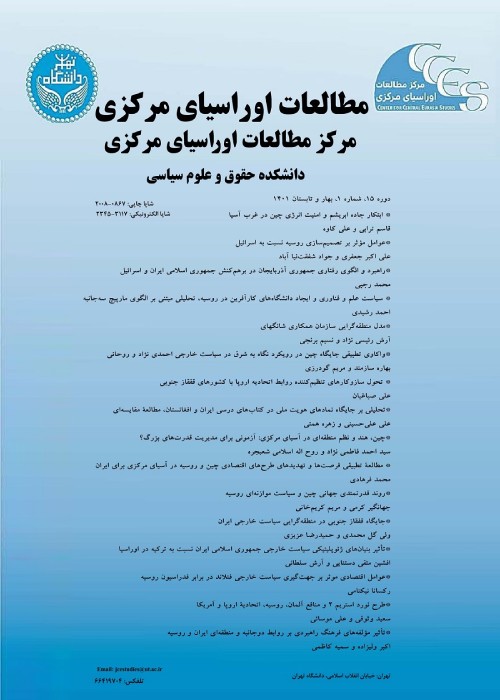Analysis of Russian Missile Defense Systems in the Lense of Neo-Clasical Realism
The Russian army is developing some reconnaissance and interceptor vehicles such as the S.300 systems to defend strategic areas belonging to some of its allied countries. Another defensive shield system was also produced on a regional scale, such as the S-400 which is more capable than the S-300 system. During this process, the Russian military began production of the S-500 defense system. Production sites of S-300 and S-400 missile systems were established in some vital regions of Russia (in Kaliningrad and Crimea) and the territory of some allied countries. However, the Russian defense shield is technically weaker and more limited compared to the Western countries defense shield, but without a doubt, this plan will not remain at these levels. The development of Russia's defense shield means that Russian leaders intend to defend their country against the threat of Western ballistic missiles. Of course, these equipments increase the offensive power of Western countries, especially by carrying tools and increasing missile defense systems. One of the main tools of Russia's defense shield is the S-300 missile system.The PMU S-300 model is capable of countering an attack missile with a speed of Mach 2-8 and a range of 1000 km. This system was established in Armenia, Tajikistan, Kyrgyzstan, Kazakhstan and Belarus. The S-400 system is also capable of shooting down stealth aircraft, ballistic missiles, hypersonic missiles and drones with a range of 400 km. But two tools only work on atmosphere.The S-500 system is also in the final stage of production with a range of 600 km and a speed of Mach 7, which is capable of shooting down hypersonic missiles and spy satellites. It is expected to be fulfilled by 2025. In addition, the Russian military has developed some ground-based early warning radars called Voronezh.The Voronezh MD model has an inspection area of 6000 km and has the capacity to detect 500 targets. Of course, this radar is only an early warning system and is not compatible with any interceptor device. Reconnaissance satellite technology has also been used for defense. Currently, several Cosmos class satellites are in service and will be deployed in outer space for this purpose. The Russian military plans to upgrade this technology and surveillance. The plan to deploy Russian missile defense systems appears not as a tactical plan, but as a strategic plan. This plan is simultaneously qualitative and quantitative in the development of detection and interception systems as well as early warning systems.Research Question: “Why is Russia thinking of creating a missile defense shield?
The hypothesis of the article is that "the concern of Russian leaders about the Western plan to create a missile defense shield has led to the development of their own missile defense tools."
This is a historical and descriptive method with an emphasis on monitoring Russia's anti-ballistic systems, as well as examining the country's official doctrine in the field of security and foreign policy. This research also deals with the situation of the Russian authorities.
The research results show that the US and NATO defense shield was the main motivation of the Russian authorities to create missile defense systems. The US and NATO missile defense shields consists of SM3 interceptors, Aegis radars and early warning satellites. However, each part is separated but they are connected by all. They will be deployed in four stages in the mentioned areas, which can defend the American forces and its allies. Those regions are American homeland, Alaska, Greenland, South Persian Gulf and South Korea. They are also carried by destroyers in the Mediterranean and the Pacific. In parallel, NATO is building its own defense shields in some places in the center and east of the continent, which are: The radar station in Turkey, the Aegis radar system in Poland and the THAAD system in Romania and the command section in Germany. The four Aegis radar systems installed on the ships they command are in the port of Rota (Spain). Some say that the third and fourth parts of the defense shield are capable of targeting Russian intercontinental ballistic missiles. The defensive shield also protects Western countries that have developed their offensive capacity in conjunction with defensive tools. Due to the withdrawal from the INF Treaty, there are no restrictions against the West. Putin’s opposition to Trump’s extension of the New Start Treaty without any conditions and Trump’s insistence on concluding a comprehensive agreement annoyed Russian authorities. In addition, Russian authorities are not happy about the establishment of a Western defensive shield near the country’s western borders. These actions cause Russia to react in the same way.
Russia's action in the development of defense systems is one of the main factors of change in the military doctrine of this country. Previously, the Russian military organized its strategic tools around the doctrine of nuclear deterrence and parity. But Russia is trying in the same direction in response to the deployment of Western missile defense elements in some strategic parts of the continent. As a result, Russia's new doctrine is based on an offensive and defensive strategy. Nevertheless, the current interactions between the West and Russia have created a new round of arms competition, especially in strategic defense tools. Russian defense systems are not at the level of their Western counterparts either in terms of content or technical quality. But these are accompanied by offensive tools that have been developed in strategic areas to pose the same threats against the West. According to this emerging trend, the Russian missile defense zone will also cover more strategic areas in the future.
Russia , Missile , America , Defense Shield , NATO , S-300 , S-400 S-500 , Voronezh , Satelite
- حق عضویت دریافتی صرف حمایت از نشریات عضو و نگهداری، تکمیل و توسعه مگیران میشود.
- پرداخت حق اشتراک و دانلود مقالات اجازه بازنشر آن در سایر رسانههای چاپی و دیجیتال را به کاربر نمیدهد.


